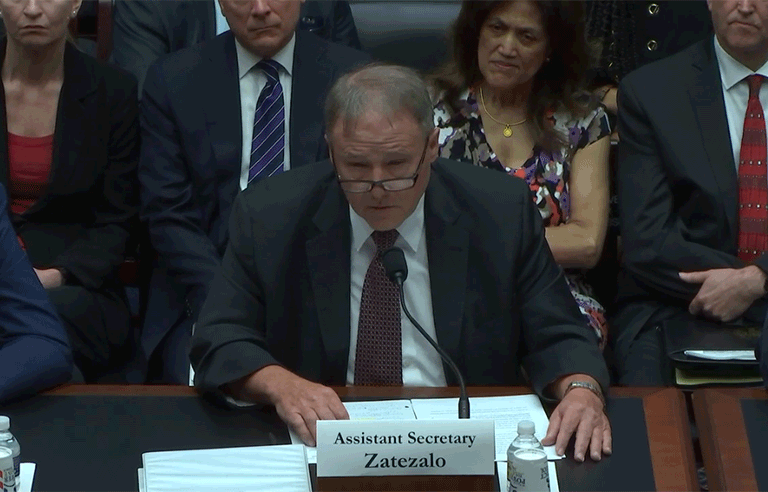Head of MSHA testifies before House on silica, rise in black lung

Washington — The Mine Safety and Health Administration’s planned Request for Information on respirable crystalline silica, scheduled for publication in July, will focus on personal protective equipment – mainly helmets with respirators – according to agency chief David Zatezalo.
The assistant secretary for mine safety and health testified before the House Education and Labor Committee’s Workforce Protections Subcommittee June 20 during a hearing prompted by a surge in black lung disease. An American Journal of Public Health study published in August 2018 stated that 10% of underground coal miners who have worked 25-plus years, as well as 20% of coal miners in central Appalachia, have black lung – the highest level in 25 years.
MSHA’s permissible exposure limit for silica is 100 micrograms per cubic meter of air, which is double OSHA’s current PEL. NIOSH Director John Howard testified during the hearing that his agency has recommended a PEL of 50 micrograms per cubic meter since the 1970s.
A proposed rule to accomplish that goal was pushed back to “long-term actions” in the Department of Labor’s Spring 2017 regulatory agenda, but MSHA moved it to the pre-rule stage in the most recent regulatory agenda, released May 22.
In the first of a two-part hearing, Cecil Roberts, president of the United Mine Workers of America, said certain work in mines makes it virtually impossible for workers to wear helmets with respirators and others types of PPE.
Zatezalo said he’s hoping his agency will find a way to make that PPE less cumbersome. He also noted that OSHA’s silica rule allows compliance achievement through PPE, while MSHA’s current standard does not.
Rep. Mark Takano (D-CA) questioned the MSHA leader on his use of an RFI, the “baby” step in federal rulemaking, instead of a proposed rule or an emergency standard.
Zatezalo responded that the average exposure to silica in mines is 25 micrograms per cubic meter, half of OSHA’s PEL. “It would seem to me that an emergency standard is uncalled for,” he said.
Zatezalo added that some mines use end-of-shift silica monitoring technology as an engineering tool but “not a compliance tool.” The agency is hopeful about the development of a continuous personal quartz monitor but Howard said the technology remains at least a decade away.
Post a comment to this article
Safety+Health welcomes comments that promote respectful dialogue. Please stay on topic. Comments that contain personal attacks, profanity or abusive language – or those aggressively promoting products or services – will be removed. We reserve the right to determine which comments violate our comment policy. (Anonymous comments are welcome; merely skip the “name” field in the comment box. An email address is required but will not be included with your comment.)

